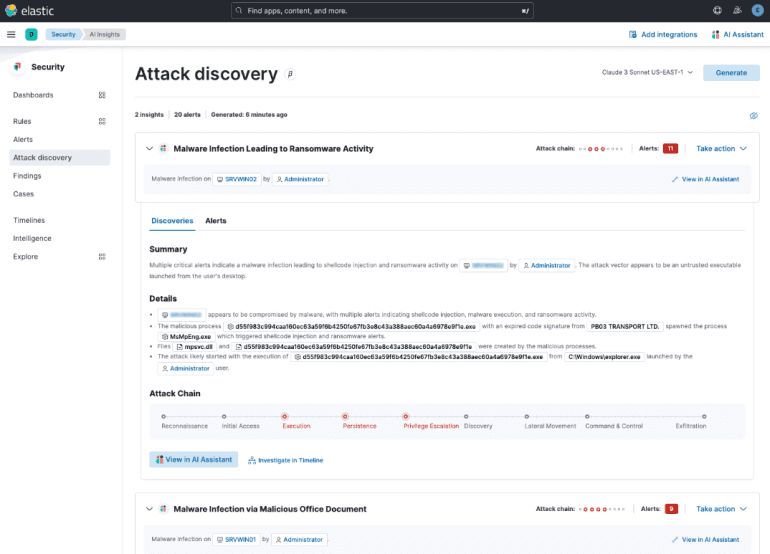- Elastic introduces AI-driven security analytics, changing the game for traditional SIEM solutions.
- Elastic Security utilizes the Search AI platform to automate manual processes and streamline threat detection and response.
- Features include Elastic AI Assistant for Security, prebuilt ML-based anomaly detection jobs, and Elastic Attack Discovery.
- Elastic’s approach prioritizes attacks over alerts, reducing response times and improving overall security posture.
- The Search AI platform gathers rich, up-to-date data to train LLMs, enabling accurate and tailored results.
- Elastic Lightens SOC workloads by automating manual tasks and streamlining workflows.
- Elastic’s LLM-agnostic approach and commitment to data privacy ensure confidentiality and security.
Main AI News:
In the ever-evolving landscape of cybersecurity, Elastic has emerged as a pioneer, reshaping the traditional Security Information and Event Management (SIEM) model with its groundbreaking AI-driven security analytics solution. Traditional SIEMs have long relied on manual intervention, placing a heavy burden on human analysts to sift through alerts, detect threats, and craft responses. However, Elastic’s innovative approach, powered by the Elastic Search AI platform, is set to disrupt this paradigm.
The core of Elastic’s solution lies in its Search AI platform, a sophisticated system that combines search and retrieval augmented generation (RAG) to deliver hyper-relevant results. This platform is the driving force behind Elastic Security, which replaces manual processes with AI-driven automation, streamlining configuration, investigation, and response.
Since its introduction in 2019, Elastic Security for SIEM has continuously evolved, incorporating advanced analytics capabilities such as prebuilt machine learning-based anomaly detection jobs. The addition of Elastic AI Assistant for Security further enhances the solution by providing support for rule authoring, alert summarization, and workflow recommendations.
One of the latest innovations from Elastic is the introduction of Elastic Attack Discovery, a feature powered by the Search AI platform. This patent-pending technology revolutionizes threat detection by triaging alerts and identifying critical attacks with a single click. By prioritizing attacks over alerts, Elastic enables security operations teams to focus their efforts where they matter most, reducing response times and improving overall security posture.
At the heart of Elastic’s AI-driven approach is its Search AI platform, which leverages the industry’s foremost search technology to gather rich, up-to-date data. This data is essential for training large language models (LLMs) to deliver accurate results tailored to each organization’s unique environment. By automating the process of data gathering and contextualization, Elastic eliminates the need for manual intervention, enabling faster and more effective threat detection.
The impact of Elastic’s AI-driven security analytics is already being felt by organizations around the world. By automating manual tasks and streamlining workflows, Elastic Lightens the workload of security operations teams, allowing them to focus on high-priority tasks and strategic initiatives. Additionally, Elastic’s LLM-agnostic approach and commitment to data privacy ensure that organizations can leverage the power of AI without compromising confidentiality or security.
As the cybersecurity landscape continues to evolve, Elastic remains at the forefront of innovation, driving the industry forward with its AI-driven approach to security analytics. By harnessing the power of AI, Elastic empowers organizations to stay ahead of emerging threats and safeguard their digital assets in an increasingly complex threat landscape.
Conclusion:
Elastic’s AI-driven security analytics represent a significant advancement in the cybersecurity market. By replacing manual SIEM processes with automated, AI-driven solutions, Elastic enables organizations to detect and respond to threats more effectively. The introduction of features like Elastic Attack Discovery further enhances threat detection capabilities, prioritizing attacks over alerts and streamlining SOC workflows. As organizations continue to grapple with evolving cyber threats, Elastic’s innovative approach positions it as a leader in the market, empowering organizations to stay ahead of emerging threats and safeguard their digital assets.

